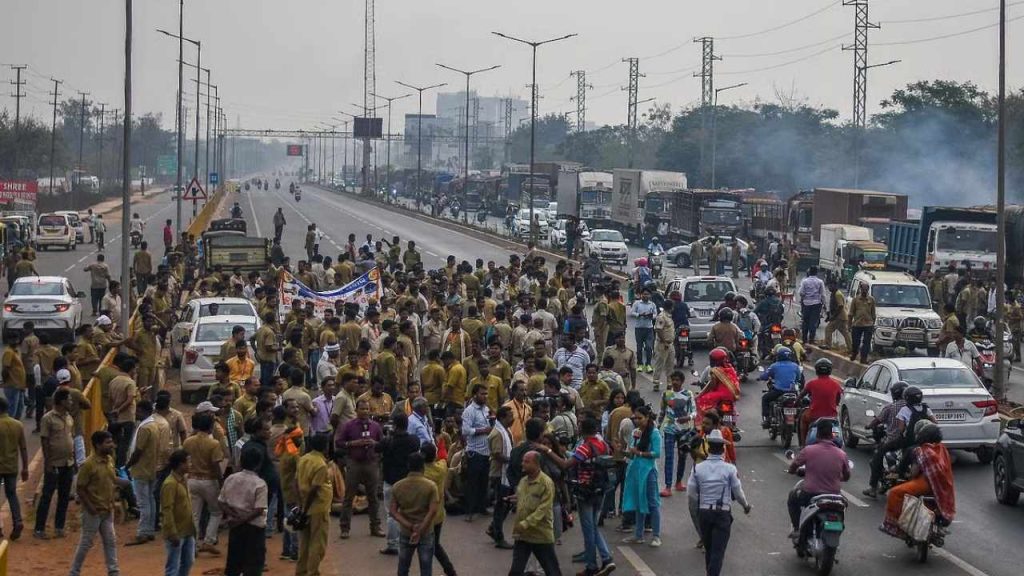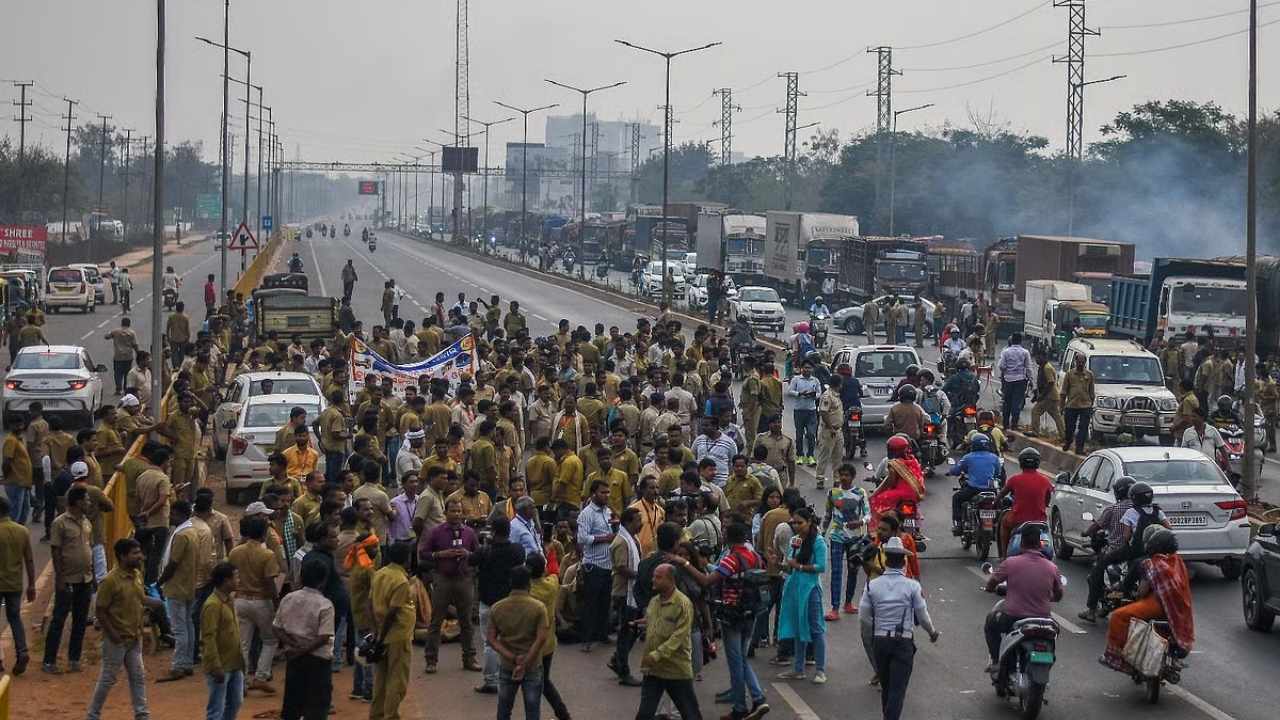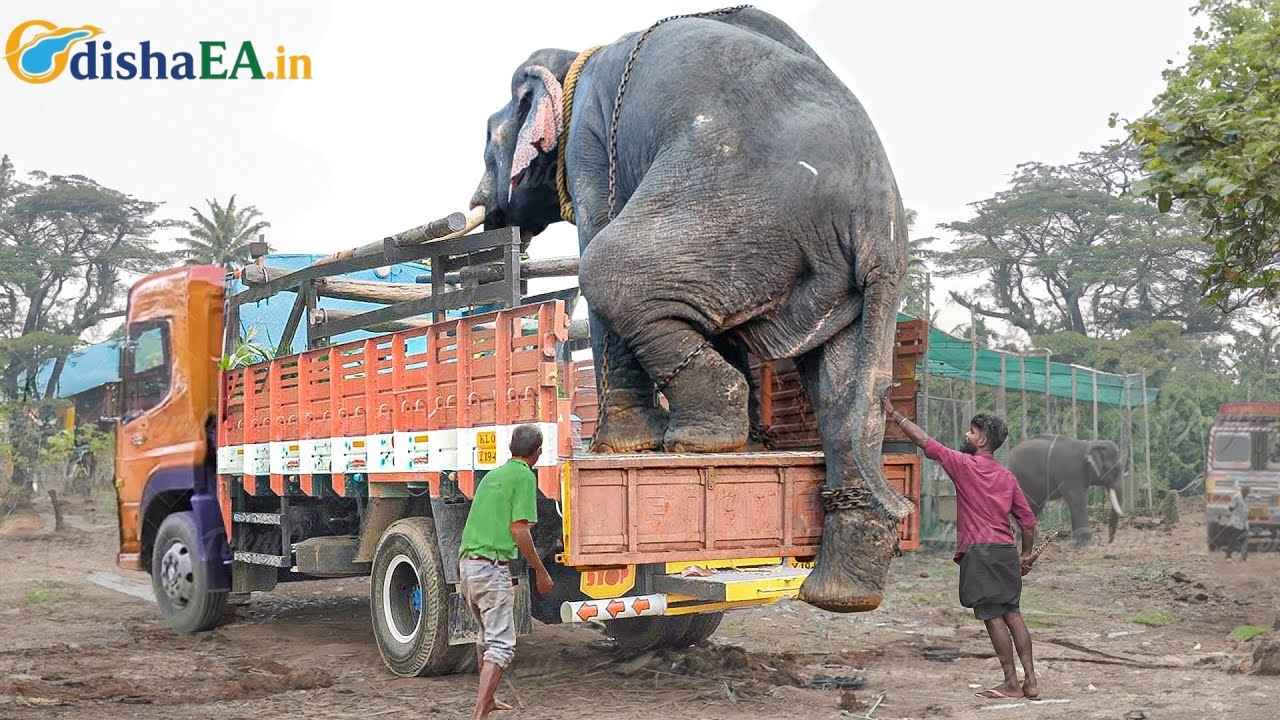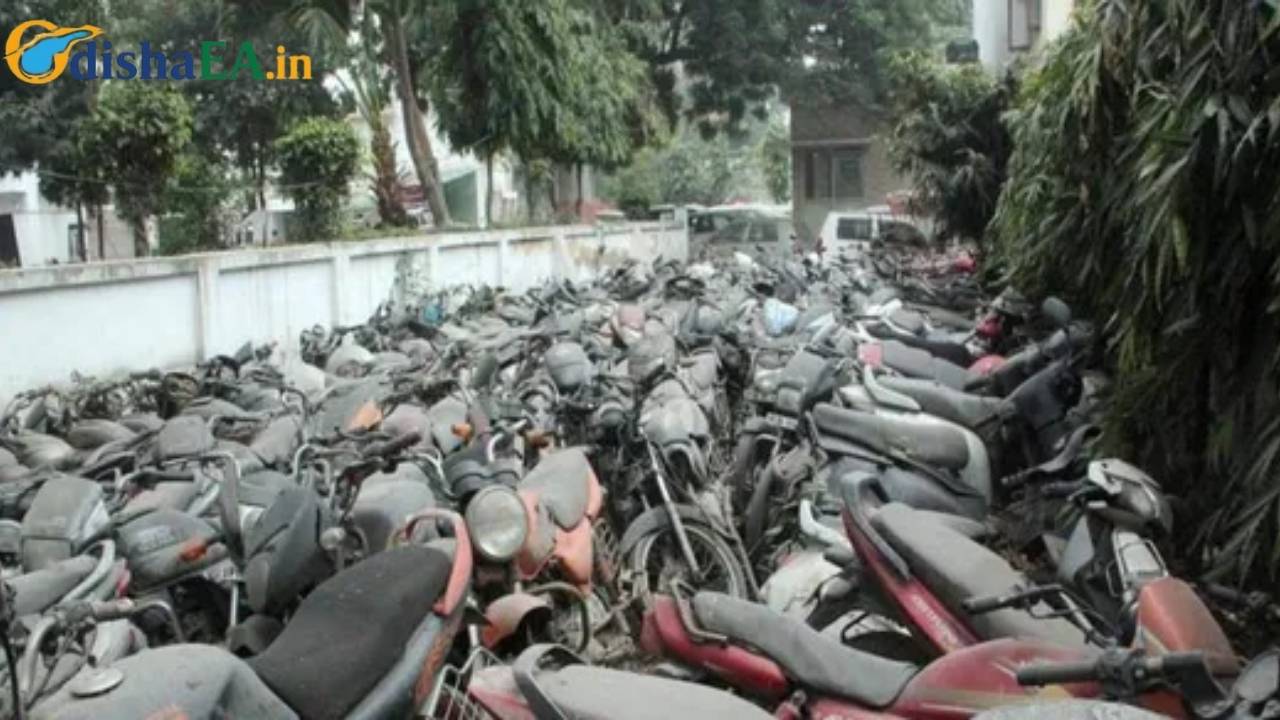In recent days, Odisha has been thrown into a transportation and fuel crisis, as a statewide driver strike continues to disrupt daily life. With passengers stranded across bus terminals and fuel supply lines experiencing significant delays, the ongoing situation has left many wondering how long this will last and what it means for the state’s economy, public transport, and daily commuters.

This is not just another protest or minor inconvenience. It’s a crisis that affects everyone, from the daily office worker to families relying on essential goods. If you’re in Odisha or planning to travel there, it’s crucial to understand the full picture: why the strike is happening, how it’s affecting the state, and what steps are being taken to bring the situation under control.
Let’s dive into the details and break it all down.
Passengers Left Stranded Amid Odisha’s
| Topic | Details |
|---|---|
| Strike Duration | The drivers’ strike is ongoing, entering its fourth day. |
| Fuel Supply Impact | Long queues at fuel stations due to disruptions in tanker deliveries. |
| Affected Areas | Bhubaneswar, Cuttack, and major transport hubs in Odisha have been impacted. |
| Public Transport Affected | 60% of private buses and other transport services have ceased operations, leaving passengers stranded. |
| Government Response | Odisha government officials are in talks with the drivers’ union, seeking to resolve the matter. |
| Passenger Impact | Passengers, including the elderly, are forced to walk long distances or miss crucial appointments. |
| Fuel Requirements | Bhubaneswar requires approximately 600 fuel tankers daily. |
| Steps Taken | A task force has been created to monitor and expedite fuel tanker movements to critical areas. |
| Essential Goods Impact | Shortages of essential goods could follow if the strike continues, affecting food supplies. |
For the latest updates, you can check out official sources like OdishaTV, New Indian Express, and Times of India.
Odisha is currently in the midst of a transportation and fuel crisis, with drivers’ strikes causing widespread disruptions. While the government is taking steps to address these issues, the situation remains fluid, and passengers and residents are advised to stay informed and plan for delays. As the government and drivers’ unions continue negotiations, it’s important to stay patient, seek updates, and adjust your travel and fuel strategies accordingly.
Understanding the Strike: What’s Happening?
The ongoing strike, led by the Odisha Drivers’ Mahasangha, has brought the transportation sector in the state to a standstill. The main goal of the strike is to push for better welfare benefits for drivers. These benefits include things like pension plans for drivers over 60, accident compensation, and better roadside facilities. Drivers, who play a crucial role in ensuring that goods and people move across the state, are demanding these changes, and without a fair agreement, the strike is set to continue.
Public and private transport services have been severely affected, with private buses accounting for about 60% of the fleet now sitting idle. This has left passengers stranded, particularly in areas like Bhubaneswar and Cuttack. People who depend on these services to get to work, attend appointments, or even visit loved ones are feeling the brunt of this disruption.
How Does This Affect Fuel Supply?
While fuel deliveries are technically still operational, the drivers’ strike has had a cascading effect on fuel logistics. In places like Bhubaneswar, where around 600 fuel tankers are required daily, queues have formed outside fuel stations as people panic-buy in anticipation of shortages. The public is anxious, and fuel supply disruptions could lead to further chaos.
The government of Odisha is working hard to ensure that fuel tankers reach their destinations without delay. Authorities have set up a task force to facilitate smoother movement of fuel shipments. However, it remains to be seen if this will be enough to prevent a serious fuel shortage.
Who Is Impacted and How?
The impact of the strike isn’t limited to just transport services. The fuel crisis is already affecting daily lives, and the longer the strike lasts, the more widespread the disruptions will be. Here’s a breakdown of who’s feeling the effects and how:
- Commuters: Daily passengers, especially office workers, students, and elderly people, are finding themselves stranded at bus terminals. Many have missed appointments, and some elderly passengers have been forced to walk long distances to get to their destinations.
- Families and Essential Services: Families who rely on buses for transportation to buy groceries or attend important events have been heavily impacted. Essential goods like food, medicine, and other necessities are at risk of becoming scarce if transport issues are not resolved.
- Fuel Stations: As mentioned, long queues at fuel stations are causing delays for vehicles. People are worried about running out of fuel and are stockpiling, which in turn creates a vicious cycle of shortages.
Government’s Response: What’s Being Done?
The Odisha government has been actively engaging with the drivers’ union in an effort to resolve the strike. According to Transport Minister Bibhuti Bhushan Jena, discussions are ongoing, and the government is open to considering the drivers’ demands. However, the drivers’ union has requested written assurances before they’ll consider calling off the strike.
On the fuel side, the state government has promised that the task force monitoring fuel tanker movements will help keep the supply chain moving smoothly. Regulatory checks on fuel stations have been ramped up to prevent hoarding or black-marketing, and the Food Supplies Minister, Krushna Chandra Patra, has assured the public that essential goods are not in short supply—yet.
A Step-by-Step Guide to Navigating the Crisis
If you find yourself in Odisha during the strike, here are a few practical steps to help you navigate the current crisis:
1. Stay Updated
Keep an eye on news from reliable sources like OdishaTV, Times of India, and local government advisories. Information will be crucial for making travel and fuel-related decisions.
2. Plan for Delays
Expect delays if you’re traveling. Whether you’re relying on buses, taxis, or personal vehicles, plan for longer-than-usual wait times, especially at fuel stations.
3. Carpool or Share Rides
If you’re heading to work or an essential destination, consider carpooling with others. With public transport at a standstill, sharing rides can help alleviate some of the pressure on the roads.
4. Prepare for Fuel Shortages
If you’re driving, try to top off your fuel tank early in the day before queues get long. It’s also a good idea to have an alternative plan in case of further disruptions.
5. Stay Calm and Patient
This is a trying time, but staying patient and following guidelines from local authorities can help everyone weather this storm.
Odisha Faces Major Transport Disruptions as Drivers’ Association Calls for Ceasework
Bharat Bandh Hits Odisha: Roads Blocked, Public Transport Suspended Amid Nationwide Protest
FAQs
Q1: How long will the strike last?
The strike will continue until an agreement is reached between the Odisha government and the drivers’ union. Talks are ongoing, but there’s no official end date yet.
Q2: What should I do if I’m stranded?
If you’re stranded, check local news sources or talk to the nearest transport office to explore alternative options like shared taxis or other forms of transport.
Q3: Will fuel prices go up during this crisis?
While the Odisha government is taking steps to prevent fuel shortages, price hikes cannot be ruled out if the crisis persists. It’s a good idea to keep an eye on fuel prices in your area.
Q4: How can I stay updated on fuel supply?
You can stay updated by visiting official resources like the Odisha Government and news outlets, which will provide information on fuel station operations and transport developments.





